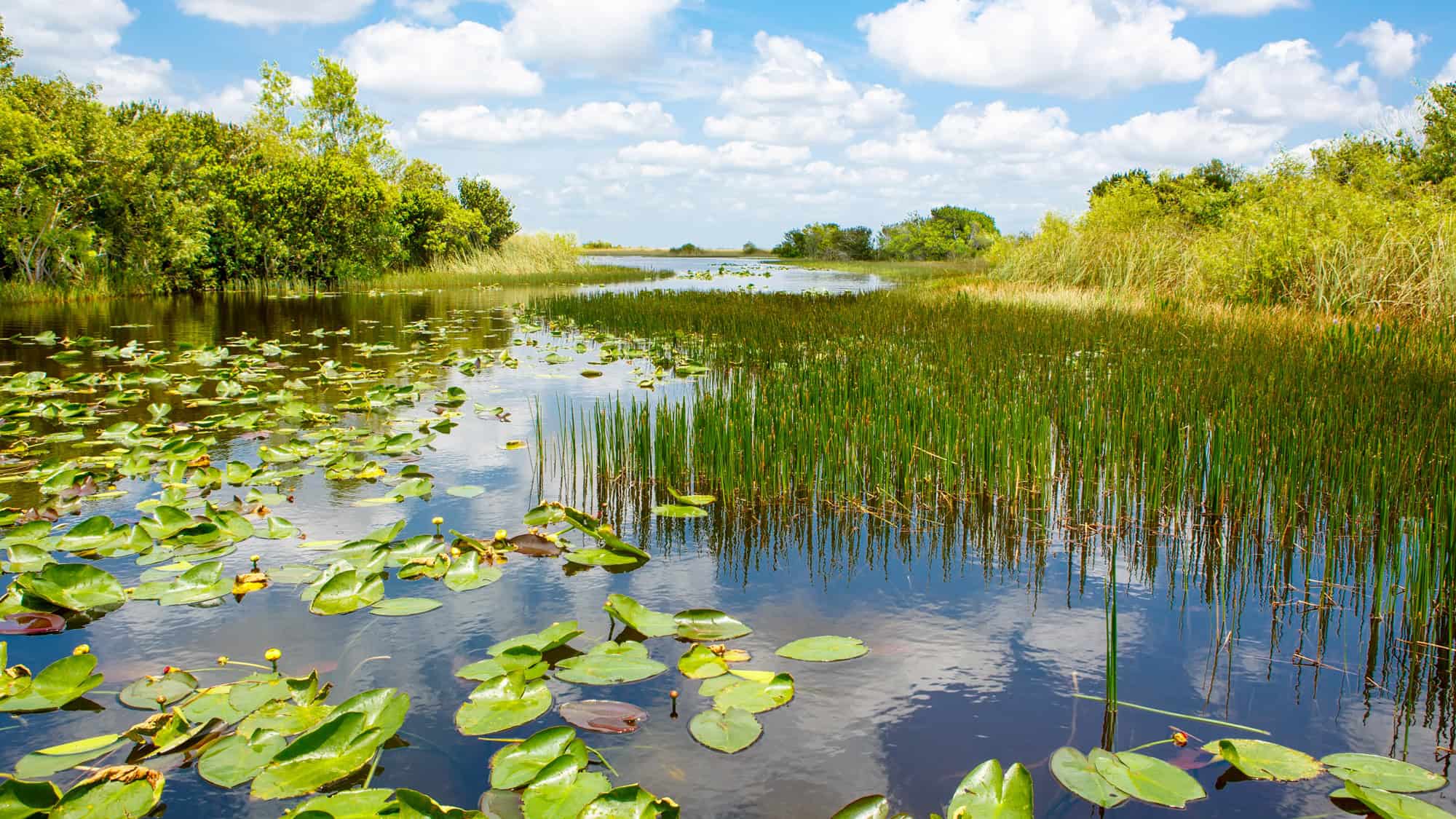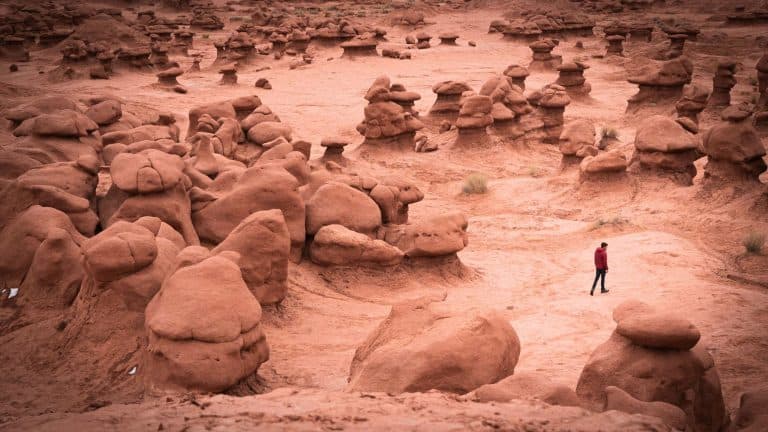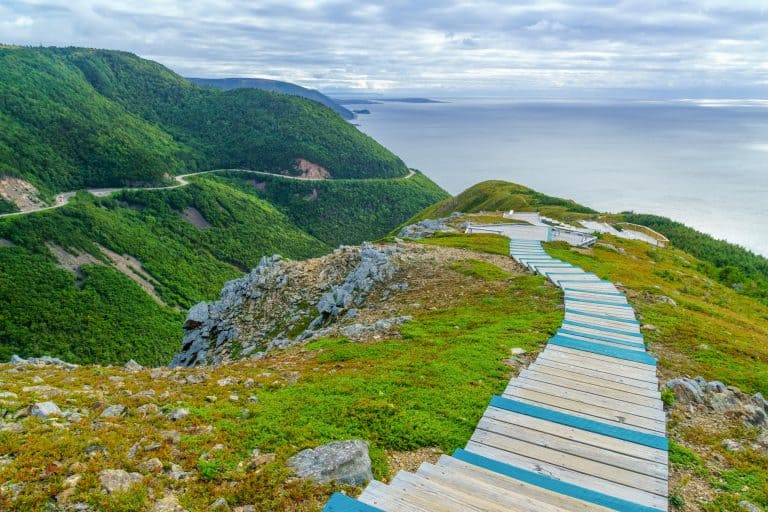Discover Parks & Wildlife contains affiliate links and is a member of the Amazon Services LLC Associates Program. If you make a purchase using one of the Amazon links, we may receive compensation at no extra cost to you. We may also use select AI tools to support our creative process, but all content is reviewed, refined, and finalized by our human team. See our disclosure policy and our AI use policy for more information.
11 U.S. National Parks Families Will Love Exploring
There’s something magical about bundling everyone into the car, snacks packed, maps at the ready, and heading toward a place where screens lose signal and real adventures begin. And the United States has a treasure chest of national parks, each one a sprawling playground of wild beauty, odd geological wonders, and the occasional herd of buffalo that won’t move for anyone.
These parks aren’t just about sweeping views (though there are plenty of those); they’re about slowing down, breathing in pine-scented air, and seeing the kind of skies you can’t find from the back patio. For families, these parks are built for every kind of explorer. Toddlers can toss pebbles into streams, teens can test their stamina on trails that climb forever, and parents can finally remember what quiet feels like.
Some parks are steamy swamps, others are high-altitude wonders, but all are guaranteed to give you at least one story that starts with “remember when.” Whether you’re looking for caves, canyons, or coastlines, the open-air classrooms of America’s national parks have a knack for turning even the most reluctant family member into a lifelong fan.
Rocky Mountain National Park, Colorado

There’s no shortage of jaw-dropping moments here, starting with the drive along Trail Ridge Road, which climbs to over 12,000 feet. At that altitude, you’re practically nose-to-nose with the clouds (and sometimes an elk or two).
Families love how the park splits the difference between easy lakeside strolls and ambitious climbs to alpine tundra. Sprague Lake offers a breezy half-mile loop where kids can spot trout darting underfoot, while Bear Lake’s surrounding trails give everyone a postcard view of snow-dusted peaks.
In summer, wildflowers turn the meadows into a painter’s dream, while winter transforms the same spots into a quiet snowshoe paradise. Estes Park, the friendly town just outside the park, makes for a cozy home base with ice cream shops and a curious number of elk wandering through parking lots.
And yes, the air’s thinner up there, so if you find yourself winded, don’t worry. You’re not out of shape… you’re just closer to the stars.
Yellowstone National Park, Wyoming

Let’s be honest, Yellowstone is the superstar of the park world. It’s got drama, steam, color, and more wildlife than a nature documentary marathon. The geysers alone could keep a family entertained for hours. Old Faithful still lives up to its name, erupting roughly every 90 minutes, while Grand Prismatic Spring looks like someone spilled a rainbow across the ground.
The park’s size is almost comical (it’s over 3,400 square miles), so it’s best to plan your days in chunks. Don’t skip the Grand Canyon of the Yellowstone, where waterfalls tumble through golden cliffs that make even the most camera-shy family member reach for their phone. Families also love the boardwalk paths around geyser basins, which keep things easy for strollers and little legs.
Stay nearby in West Yellowstone or inside the park’s historic lodges, where evenings are best spent around a crackling fire, trading sightings of moose and marmots.
Joshua Tree National Park, California

This park is what happens when two desert ecosystems decide to show off. The Mojave and Colorado deserts meet here, creating a surreal landscape of twisted Joshua trees and massive boulders stacked like playgrounds for giants. Families often stop at Hidden Valley, an easy one-mile loop with rock formations begging to be climbed (within reason, of course).
The park is famous for its night skies, which glow with stars so bright they feel close enough to grab. So bring a blanket, lie back, and watch for shooting stars that seem to wink just for you.
Daytime visits call for hats, sunscreen, and plenty of water (the desert sun is no joke). And make sure to stop by the Joshua Tree Visitor Center for maps and advice on which trails best suit your group’s stamina levels.
Yes, kids will probably ask why the trees look “fuzzy and weird.” That’s just part of the fun.
Mammoth Cave National Park, Kentucky

Beneath the Kentucky hills lies the world’s longest known cave system, with over 400 miles of underground twists, turns, and surprises. It’s the kind of place that feels both eerie and exciting, especially when your guide flicks off the lights to show how deep the darkness goes… cue the nervous laughter.
Mammoth Cave’s tours range from short and easy to full-on spelunking for the brave. Families can opt for the Frozen Niagara Tour, where delicate stalactites drip like icy chandeliers, or the Historic Tour, which covers big chambers that feel straight out of an adventure movie. Temperatures inside the cave stay around 54°F year-round, so bring a jacket no matter how hot it feels outside.
Above ground, miles of hiking and biking trails wind through hardwood forests filled with birds and wildflowers. Kids love the ranger-led programs, where they can earn a Junior Ranger badge and learn why bats are far cooler than most superheroes. There’s also a campground and even canoe rentals along the Green River for those who prefer daylight adventures.
Zion National Park, Utah

Zion is one of those places that makes even the most talkative traveler go silent for a moment. The red cliffs rise so high they almost frame the sky. Families flock here for the easy shuttle system that keeps traffic out of the scenic canyon and makes hopping between trailheads simple.
The Riverside Walk offers a relaxed, paved path that ends at the start of the famous Narrows, where wading through the Virgin River becomes an unforgettable (and occasionally splash-filled) adventure. If you have older kids, Angel’s Landing might tempt them, but fair warning, it’s not for the faint of heart or the wobbly-footed. Chain-assisted climbs and steep drop-offs make it one of the park’s most thrilling hikes.
Early morning and late afternoon are the best times for photos when the canyon walls glow in shades of gold and crimson. And if you catch yourself whispering “wow” every five minutes, you’re not alone (Zion has that effect on everyone).
Stay in Springdale, just outside the entrance, where restaurants and shops provide a soft landing after long days in the sun.
Cuyahoga Valley National Park, Ohio

Situated between Cleveland and Akron, this park feels like a secret patch of wilderness hiding in plain sight. Cuyahoga Valley offers waterfalls, woodlands, and the nostalgic Cuyahoga Valley Scenic Railroad, where you can hop on board and watch the landscape roll by without lifting a hiking boot.
Brandywine Falls, one of Ohio’s most beloved waterfalls, cascades 65 feet into a gorge framed by sandstone cliffs. Families enjoy the easy boardwalk trail that leads to its overlook, perfect for photos and snack breaks. And the Towpath Trail, following the historic Ohio & Erie Canal, is ideal for biking or leisurely walks shaded by old trees.
In autumn, the park turns into a painter’s masterpiece, with red and gold leaves reflected in the Cuyahoga River. Pack a picnic and spread out on the grass near Indigo Lake, where time seems to pause. It’s proof that even near a busy city, nature can still put on a show worth slowing down for.
Sequoia National Park, California

Standing among the sequoias makes you feel small in the best possible way. In fact, some of these trees have been around for more than 2,000 years and have reached heights of over 250 feet. The General Sherman Tree holds the record as the largest tree on Earth by volume, and it’s a family favorite for obvious reasons.
The Congress Trail offers a gentle loop past some of the park’s biggest giants, shaded and easy enough for kids to handle. And if you’re feeling energetic, head up to Moro Rock for sweeping views of the Sierra Nevada. It’s a climb of just over 350 steps, and each one comes with a reward worth the effort.
Keep your eyes peeled for black bears and mule deer wandering through the forest. Summer brings clear roads and open trails, while winter transforms parts of the park into a snowy wonderland perfect for sledding. Bring a light jacket and your sense of awe; you’ll need it. Because few places make time feel as slow or the world feel as big as Sequoia does.
Everglades National Park, Florida

If you’ve ever wanted to feel like you’re in a real-life wildlife documentary, this is the place. The Everglades stretch across 1.5 million acres of wetlands, mangroves, and sawgrass prairies filled with creatures that slither, splash, and soar. It’s the only place on Earth where alligators and crocodiles share the same habitat… a fact that never fails to get everyone leaning a little closer to the boat’s edge.
Airboat rides are the classic experience, skimming over shallow water as egrets and herons lift off around you. Families who prefer slower exploration can rent kayaks or take a ranger-led tram tour through Shark Valley, where wildlife sightings are practically guaranteed.
Winter is the best season to visit since humidity and mosquitoes take a vacation of their own. And the Ernest Coe Visitor Center offers helpful exhibits and maps for planning your route. Just be ready for unpredictable weather and wear shoes that can handle a little mud.
Bryce Canyon National Park, Utah

Bryce Canyon looks like a giant decided to sculpt a city of stone spires, called hoodoos, and then left it for us to admire. The amphitheater view from Sunrise Point might be one of the most surreal sights in the entire country. The contrast between red rock, blue sky, and green pines feels almost unreal.
Families often start with the Navajo Loop Trail, which winds down among the hoodoos before looping back up to the rim. It’s short but steep, and every twist reveals a new fairytale formation. Kids love trying to spot shapes in the rocks. Some swear they see castles, others say faces.
Evenings bring stargazing that will spoil you for city skies forever. Rangers often host astronomy programs where telescopes reveal the Milky Way in all its glory.
And if you’re driving from Zion, expect the trip to take just under two hours across about 80 miles of striking Utah scenery, making it easy to double your red-rock adventure in two parks.
Badlands National Park, South Dakota

At first glance, the Badlands look, well, bad. You might spot barren ridges, strange colors, and dramatic gullies stretching to the horizon. But give it a moment, and the beauty sneaks up on you. The park’s striped formations tell a 75-million-year story of wind, water, and fossils, making it a paradise for little paleontologists.
Families can tackle the Door Trail, an easy walk through cracked landscapes that feel like you’re on another planet. And the Fossil Exhibit Trail showcases replicas of ancient creatures discovered here, including saber-toothed cats and three-toed horses. Keep an eye out for bighorn sheep balancing on rocky ledges and prairie dogs popping up like tiny park rangers in the grasslands.
Sunset is the real showstopper, when the hills glow orange and pink as if someone turned on a hidden light switch. Plus, the nearby town of Wall makes a good stop for supplies or a quirky souvenir or two.
Grand Canyon National Park, Arizona

No matter how many photos you’ve seen, nothing prepares you for that first look over the rim. The Grand Canyon is over 277 miles long, a mile deep, and absolutely unapologetic about stealing your breath away. Families can start at the South Rim, where paved paths and shuttle routes make exploring easy without losing the sense of wonder.
Mather Point offers one of the most iconic views, especially at sunrise or sunset. The Rim Trail stretches for miles, perfect for choosing your own adventure length. And for a touch of history, step inside El Tovar Hotel, which has been welcoming guests since 1905.
Mule rides and river trips add a dash of old-fashioned excitement, while the Yavapai Geology Museum helps kids grasp just how ancient the canyon’s layers are. Yes, photos never quite capture it. But standing there, watching light shift across a landscape millions of years in the making, you realize some places aren’t meant to fit on a screen. They’re meant to stop you in your tracks.
Like Our Content? Follow Us on MSN (or click the Follow Button above) for more from Discover Parks & Wildlife.
7 East Coast National Parks That Deserve a Spot on Your Bucket List

If you thought your bucket list was already overflowing like a bad buffet, prepare to make room for these East Coast national parks.
7 Oldest U.S. National Parks That Still Reign Supreme

Oh sure, because who doesn’t want to read about those ancient U.S. national parks that have been hanging around longer than your great aunt’s fruitcake?
12 National Parks You’ll Wish You Had Visited Sooner

Who needs a time machine when you can read about all the national parks you absolutely should have visited by now, and then just sulk in envy instead?






